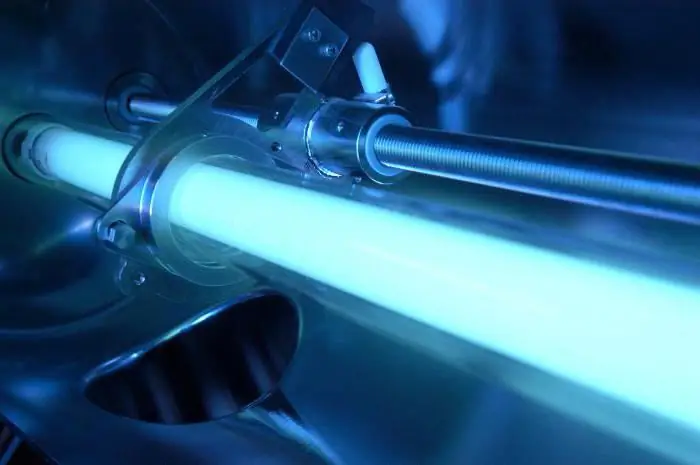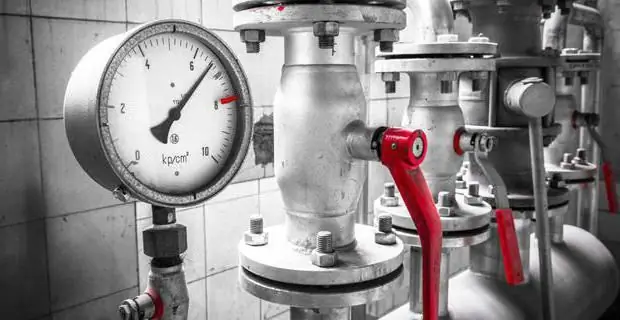2026 Author: Howard Calhoun | [email protected]. Last modified: 2025-01-24 13:10:34
Water tower is the simplest design designed for autonomous regulation of water flow and pressure in the plumbing system. The simple principle of operation of the water tower determined its widespread use.
Types of water towers
Such designs have been used by mankind for several centuries. The peak of their popularity falls on the end of the 19th - the first half of the 20th century. At that time they were used in depots and stations for servicing steam locomotives. Since then, they have lost their significance, but are still used, for example, for autonomous water supply to suburban areas or industrial enterprises.

The first water towers were built mainly of red brick, less often of wood. Then reinforced concrete structures appeared. In the second half of the 20th century, the scientist Rozhnovsky proposed his design from steel sheets.
Rozhnovsky's tower looks very similar to a grenade with a handle. The diameter of the base of the water tower is 1.5-2 times less than the diameter of the tank. The advantages of this design are high assembly speed (hollow cylinders are welded from steel sheets) and easy installation on site, as well as relatively low weight.
Now for water supply, individual tanks in the form of volumetric metal tanks are most often installed. Steel or reinforced concrete columns are used as supports.
The principle of operation of the water tower
The operation of the water tower would be impossible if it were not for the phenomenon of pressure equalization in communicating vessels, or hydrostatic equilibrium. Under the influence of gravity, the water in the tank displaces the liquid from the pipes until the pressure in the tank becomes equal to the pressure in the piping system. This was the basis for the operation of water towers before the advent of electric pumps.

With the advent of electric pumps, the scheme of their work has changed somewhat. If earlier they were the main sources of water in the system, now they began to play the role of a reserve. A pumping station acts as a "supplier" of water, which supplies pressure through a pipe system directly to the consumer.
At the same time, the pump pumps water into the tank of the tower until it is completely full or the automatics work. At the moment of peak load, when water consumption is maximum, and the pumping station cannot cope with the work, the tank valve opens, and water begins to flow into the system from the reserve. This happens until the water supply station again begins to cope with its duties. Afterthe whole cycle repeats.
Water tower elements
Regardless of the type and principle of operation, the water tower consists of 5-6 nodes. The number of elements can vary significantly and is determined by the purpose of the facility, its location, remoteness of the primary source, water quality and other criteria.

One way or another, each tower contains:
- Tank - a steel, reinforced concrete or plastic tank with a capacity of several tens to several thousand cubic meters.
- Support - a frame or monolithic structure made of reinforced concrete, steel beams or red brick with a height of no more than 25-30 meters. It must keep the tank above the level of each consumer.
- Vertical water supply - a supply pipe coming from the source and outlet, with a diameter of 200 m, which is laid to the water supply system.
- Ventilation hatch - in the photo of the water tower it is shown with an arrow. It is necessary to maintain the volume of air in the tank and to prevent water stagnation.
- Pumping station with control systems is a separate structure, usually located above the source.
A filtering system with various degrees of water purification can be introduced into the design of the water tower, as well as an automation unit to control the liquid level and prevent it from falling to a critical value.
Main functions of the water tower
From the principle of operation of the water tower follows its main function -alignment of the work schedule of the pumping station. Imagine a situation where the pump supplies water directly, without an intermediate link in the form of a water tower.
At the request of each consumer, it turns on and off, that is, it works chaotically. As a result, the wear of its mechanisms increases, energy consumption becomes uneven, which increases the load on the power plant.

As a result, service companies are forced to spend money on expensive repairs. To prevent all this from happening, they install water towers.
The second function is to maintain pressure in the pipeline. Water located at a considerable height, under the influence of gravity itself creates the required pressure in the system. As a result, the load is removed from the pumping station.
Additional purpose
Other purpose and operation principle of the water tower are closely related. The water in the source very rarely meets the established sanitary standards, so if it is used for domestic needs or for drinking, the water tower is used as a filtration plant.

Coarse filters are built into the supply pipeline system, which trap heavy metals, iron and lead oxides, sand and other pollutants. In the tank, the hearth settles and becomes even cleaner. The system of cleaning cartridges installed on the supply water supply can purify water from pathogenic bacteria, delivering toto the consumer a perfectly pure product.
The creation of an emergency supply of water, which can be used in the event of a water main failure or a fire, is another additional function of the water tower.
Work of the tower with an autopump
The principle of operation of a water tower with an automatic pump is practically no different from the work scheme described by us earlier. The only exception is the fact that in such a system there is no pumping station as such. Its function is performed by a compact electric pump.
When the water level in the tank drops below the threshold value, the automation system sends a signal, and the pump starts pumping water into the tank. Once the tank is full, wait until the liquid level drops again.
Such systems are used most often in private and suburban areas. A float acts as an indicator of the liquid level, which, falling almost to the very bottom, closes the contacts and gives a signal to the relay, otherwise it already controls the operation of the pump.
Definition of characteristics
In order for the system to perform its duties properly, it is necessary that the height of the water tower be greater than the height of any other serviced structure. That is why water tanks can often be seen on the roofs of multi-storey buildings (especially in American films). If this condition is not met, then stagnation of water in the tank is possible.

Another important parameter of a water tower is the volume of the working tank. This indicator is determined by the flow chartwater by consumers. Usually the size of the container is selected so that the accumulated liquid is enough for use throughout the day. In this case, the pump will turn on only at night, which will reduce the load on the power grid.
Foundation design features
The height of the tower and the volume of the tank directly affect the cost of the tower. And we are talking not so much about the cost of the supporting structure and the reservoir, but about the price of the foundation. Before choosing the type and depth of the foundation, a calculation is made not only for the static load, but also for the dynamic one - during the filling of the tank, vibrations may occur that will unbalance the structure.

Sustainability is also calculated taking into account the effect of wind load. The higher the tower, the more it will deviate from the vertical plane in strong and gusty winds. Swinging, the tower will begin to “disturb” the water, waves will appear, which will increase the allowable pressure of the water tower on the base several times. As a result, the structure will collapse.
Therefore, when installing even a country house, do not neglect the help of professionals. By spending money now, you can have peace of mind about the reliability and performance of your water tower in the future.
Recommended:
The rate of water consumption and sanitation. The principle of rationing water consumption

Economical use of all natural resources is the task of each of us. It is no secret that in cities there is a norm of water consumption for each inhabitant, such norms have been developed for industrial enterprises. Moreover, water disposal is also normalized, i.e. sewage
Electric locomotive 2ES6: history of creation, description with photo, main characteristics, principle of operation, features of operation and repair

Today, communication between different cities, passenger transportation, delivery of goods is carried out in a variety of ways. One of these ways was the railroad. Electric locomotive 2ES6 is one of the types of transport that is currently actively used
UV water disinfection: principle of operation, installation. Drinking water - GOST valid

Technologies in the field of water treatment do not stand still. Today, many methods are used to ensure the required quality of drinking liquids that meets the requirements of GOST. One of them is ultraviolet disinfection of water. It will be discussed in the article
Water valves: overview, types, principle of operation and characteristics

Despite its apparent simplicity, the water valve is a relatively complex design, the build quality and reliability of which directly affect the workflow when supplying water
Low pressure heaters: definition, principle of operation, technical characteristics, classification, design, operation features, application in industry

Low pressure heaters (LPH) are currently used quite actively. There are two main types that are produced by different assembly plants. Naturally, they also differ in their performance characteristics

